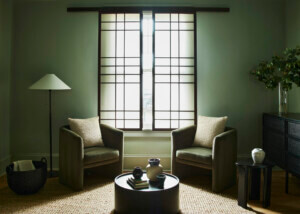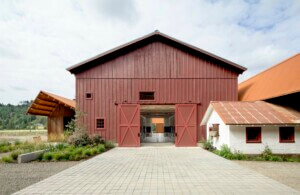In 2018, Norrsken, a Swedish nonprofit that helps entrepreneurs address a range of social problems, was looking to establish a coworking space beyond its Nordic hub. Branded as a “House,” Norrsken’s coworking spaces offer entrepreneurs a space to collaborate. Norrsken supports these destinations in addition to operating a startup accelerator and venture capital fund.
After Norrsken visited a number of African countries in search of potential sites, the Swedish Embassy in Kigali put them in touch with MASS Design Group, whose work in Rwanda includes schools, healthcare centers, and housing. Norrsken identified the Rwandan economy as having a gap in which small- and medium-sized businesses lacked the capacity to grow. Rwanda’s economy has seen consistent, fast-paced GDP growth during an “increasingly authoritarian” period of governance.
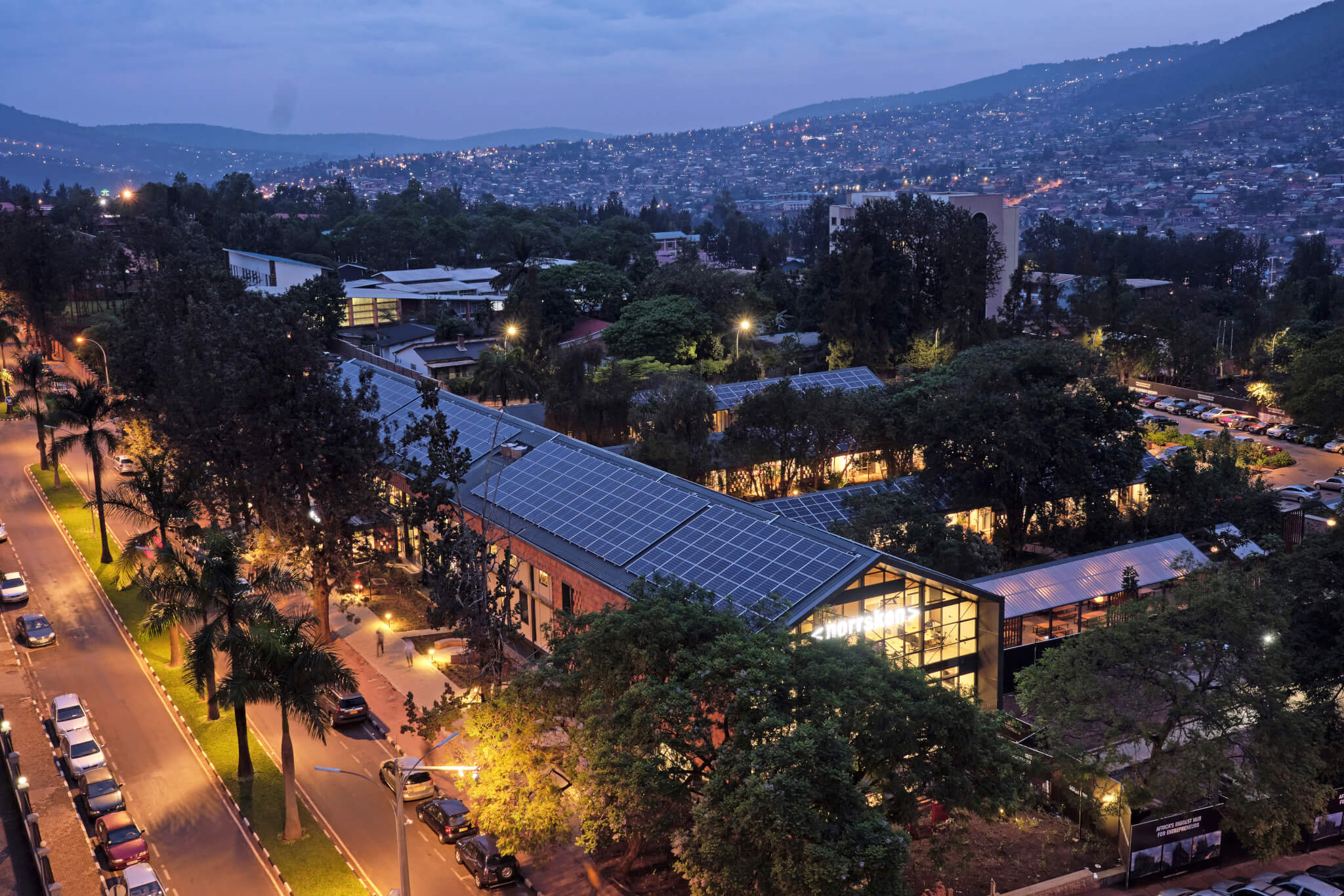
Norrsken wanted to work from a historic building, and MASS played a key role in convincing the organization to establish its second outpost in Kigali, Rwanda’s capital. (Norrsken plans to open a third House in Barcelona this year.) Anton Larsen, a principal in MASS’ Kigali office, told AN that the designers visited Norrsken’s offices in Stockholm and began to engage with entrepreneurs in Rwanda to understand how Norrsken’s model could adapt to an East African economy. MASS identified the potential sites, including the former École Belge de Kigali.
The École Belge (Belgian School) had moved locations, and its former building, centrally located in Kigali, was vacant and for sale. The school was established in 1965, shortly after Rwanda’s independence from Belgium. A number of its alumni serve in high-level positions within the Rwandan government. Once MASS secured the contract for Kigali House, the design team began to further understand the site’s existing buildings.
During MASS’ engagement process with Norrsken, Kigali’s masterplan was undergoing its third revision. Larsen shared that some team members at MASS were involved with the stakeholder engagement process of the plan’s revision and lobbied for a historic preservation overlay for the masterplan. Much of the plan was oriented toward vertical density, and MASS made the case for a relaxation of zoning regulations so the École Belge could be preserved.
Assessments of the existing classrooms, built in the 1960s and 1970s, revealed that most could be workably retrofitted, and structurally and seismically reinforced. MASS documented the existing materials and organized them to be reused in other aspects of the project. On the southern end of the site, four classroom blocks were preserved, and on the northern end of the site, two smaller classroom blocks were preserved and converted to be programmed for a pop-up or gallery space. The site’s eastern end is bounded by a major boulevard, and the school, before MASS’ intervention, had been walled-off to the surrounding neighborhood. A section of the site is reserved for future development.
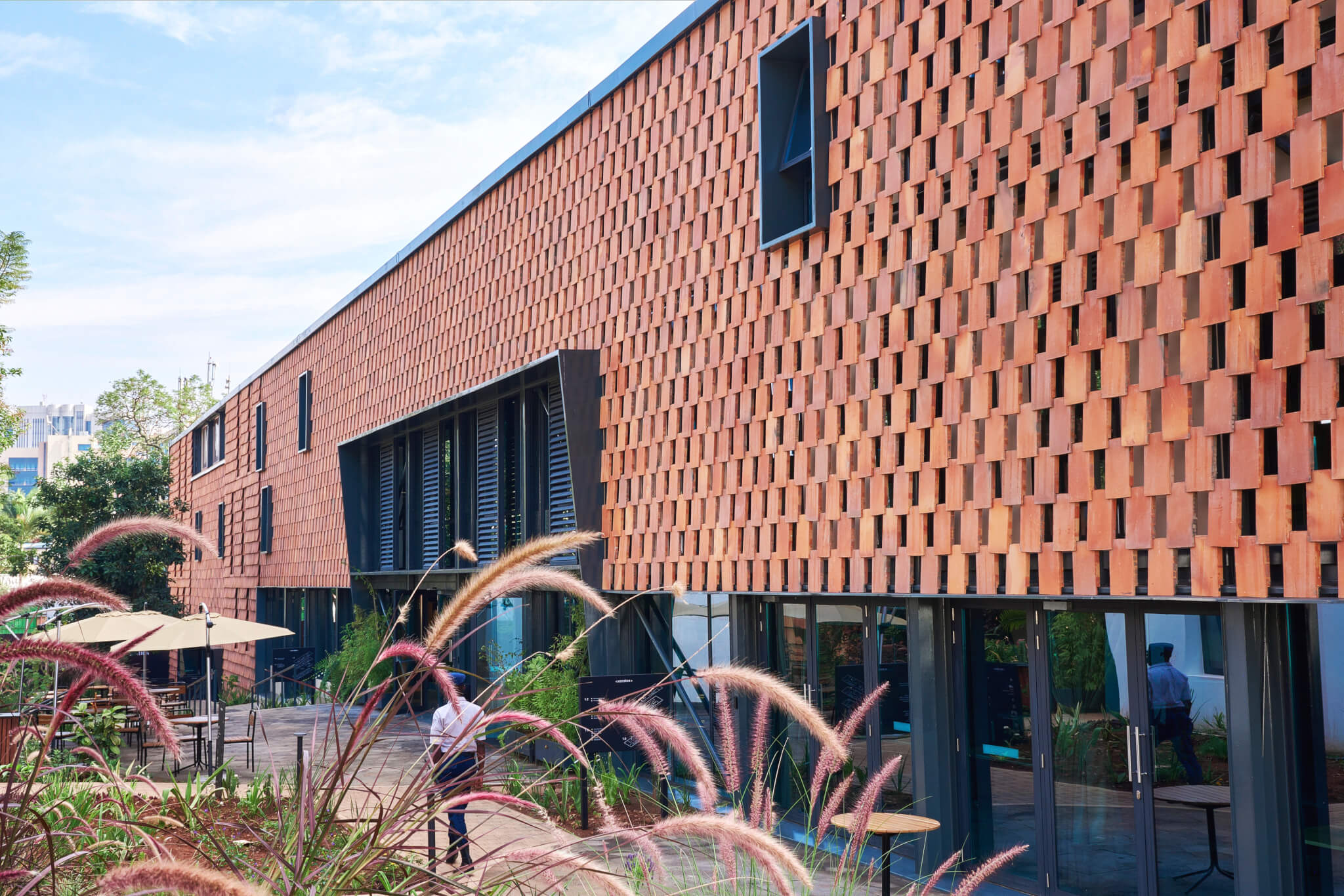
As the former school was deconstructed, the steel frame of the school’s gym was reused for a pergola, and bricks were repurposed for benches. The campus’s pergola regularly hosts events that are open to the public, and the auditorium—known as the “town hall”—supports events and lectures. Workers demolished the site’s existing perimeter walls, extending Norrsken’s mission of opening opportunities to local entrepreneurs by physically opening the site to public use. The three sides of the campus’s perimeter that provide road access are lined with greenery.
Workers added shear walls to structurally reinforce the classroom blocks that were preserved and strengthened their foundations. Additionally, MASS conceived a ground-up structure as an addition to the site to serve as the main hub for Norrsken House and oriented its transparent structure toward the community.
The main building runs along the site’s north-south axis, which opens it to significant sun exposure in the morning and evening; this was required in order to preserve the classroom blocks to a greater extent. Given this position, MASS spent significant attention on the building’s facade design to mitigate heat gain. They opted for additional wood-fiber insulation in the roof and designed a labyrinth cooling system in the basement. MASS designed the basement in line with the site’s slope, so it anchors roughly one third of the building’s total footprint. The system is powered by a low-energy fan, which takes air from a shaded exterior courtyard and circulates it slowly through the labyrinth. At night, the walls cool as air temperatures fall, so the cooler air is circulated through high-intensity areas—an auditorium, coworking spaces, and a lobby—as they warm during the day. Sensors that record temperature and carbon dioxide regulate the fan. Classrooms in the main building are naturally ventilated.
MASS’ concern for environmentally sound design also impacted material selection. When new materials were needed, MASS sought out local products and hired and trained local workers for the construction process. Larsen emphasized the importance of working with the contractor to understand the importance of deconstruction instead of demolition and training workers to preserve materials when necessary.
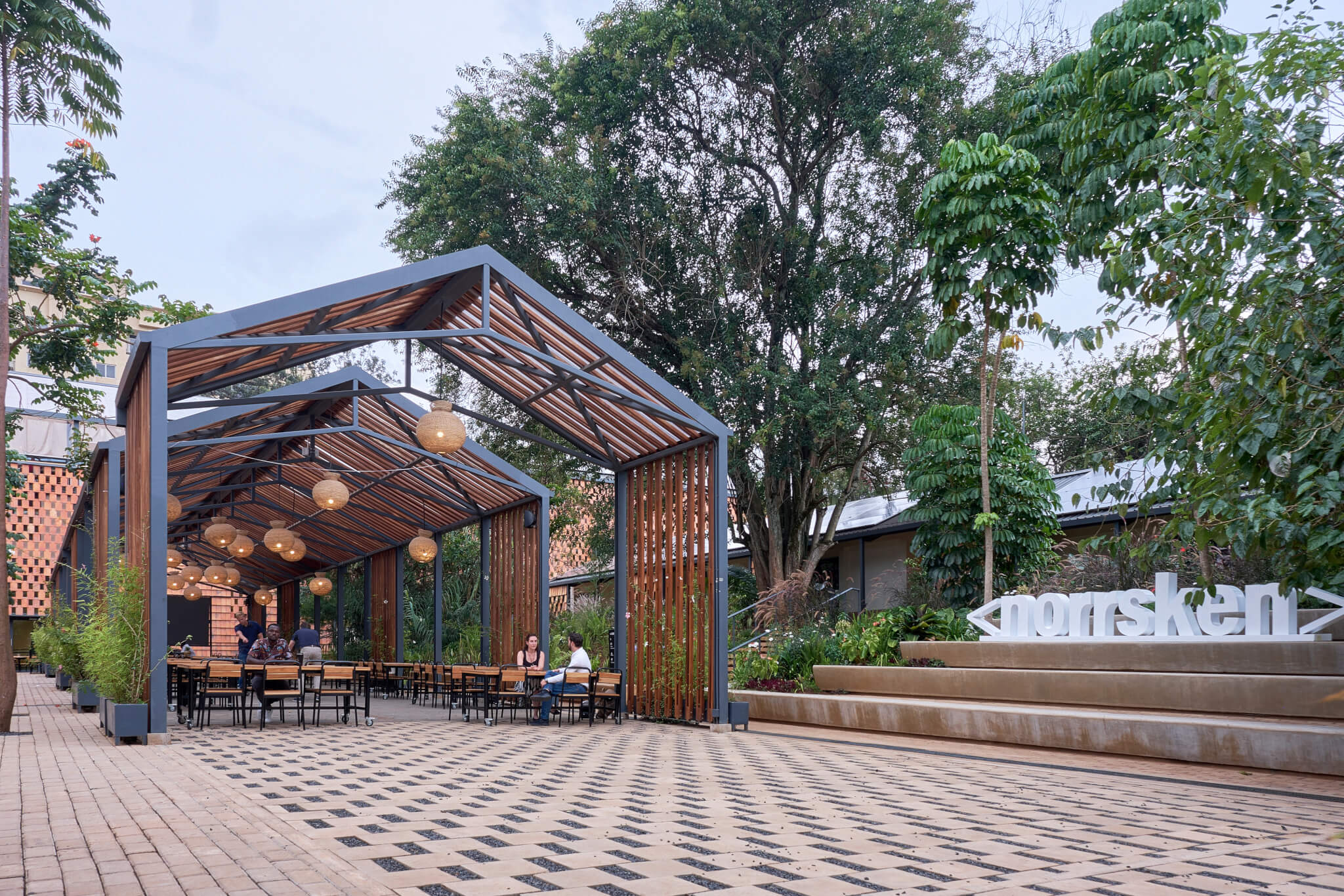
The new main structure was built from sustainably sourced Rwandan timber and Kenyan steel. Cross-laminated timber trusses were shipped from Europe, as domestically manufactured equivalents were not available. The timber framing weighed less than a standard concrete structure, which allowed smaller foundations. In the main building, external walls were built with aerated autoclaved concrete fabricated in Rwamagana, Rwanda. Formed into lightweight blocks, these allowed MASS to optimize the steel and structural member sizes while further reducing the weight of the structure. Larsen said that MASS sought to “optimize material use and stay away from concrete as much as possible.”
The main building’s steel and timber structural components were designed to be easily deconstructed and reused if needed. “A lot of thought went into the structural design to consider the future use, or reuse, of the structure and materials,” Larsen noted.
A new screened facade was custom fabricated in Kigali using local clay fired from coffee husks, and interior steel components were manufactured domestically. Exterior double-glazed glass made in Kenya was specified for the windows, including on the preserved classroom block openings, and new steel window frames were fabricated locally. Photovoltaic solar panels were added to the roofs. Larsen said that Norrsken House is now “basically operating 100 percent on solar.”
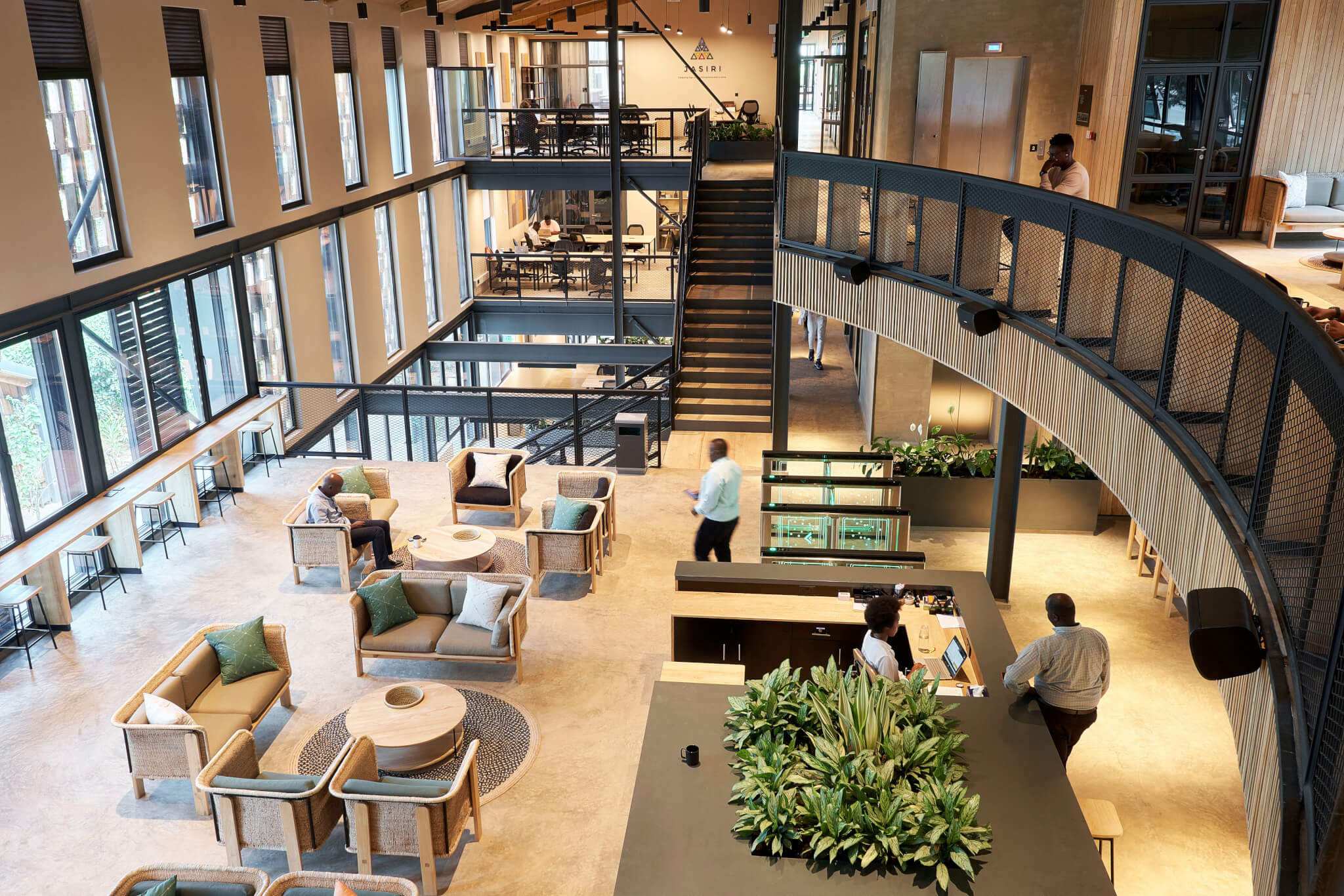
MASS also carried out landscape preservation work on the site with the goal of preserving the existing ecosystem. Workers only had to remove two or three trees across the site, and during construction a number of plants were moved to a nearby nursery and then replanted on-site after construction wrapped up. Additional native plants were added to rebuild the site’s biodiversity. Larsen said that this was the first time the design team had carried out such efforts “on a whole site.”
Larsen said that everyone saw the benefits of preserving and adapting the former École Belge through a circular-economy approach, noting that the site can serve as a precedent for future projects. There are a limited number of historic structures left in central Kigali, and Larsen offered that the city’s response to the adaptive reuse effort has been positive. There are signs of life for this project whose design benefits the community: Near a municipal bike location, the lobby’s street-facing coffee shop is already a destination for meetings.








